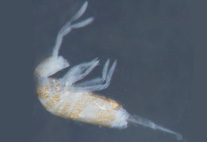Abstract
Recently collected material from Australia, Japan and Guam allowed us to revise Phyrella and describe Phyrella mookiei sp. nov. We redefine the genus based on combined morphological and molecular analyses. Phyrella unlike most dendrochirotids eviscerate posteriorly. The number of tentacles is variable (14–20), as is the degree of fragmentation of the calcareous ring, calling into question the separation of Phyllophorinae and Semperiellinae, and suggest that Semperiella and Thyonidiella are synonymous with Phyrella. We recognize five species in Phyrella (Phyllophorus trapezus Clark, 1932, Phyllophorus fragilis Mitsukuri & Ohshima, 1912 (synonymized with Thyonidiella oceana Heding & Panning, 1954), Phyllophorus thyonoides Clark, 1938, Semperiella drozdovi Levin & Stepanov, 1999, and Phyrella mookiei), assign three others provisionally (Lipotrapeza ambigua Cherbonnier, 1988 (synonymized with Phyllophorus contractura Cherbonnier, 1988 and Thyonidiella cherbonnieri Rowe & Richmond, 2004), Phyllophorus bedoti Koehler, 1895, and Orcula tenera Ludwig, 1875), considering the last two species inquirenda. Phyrella aculeatus (Ludwig, 1894), is transferred to Euthyonidiella. Orcula (Phyllophorus?) dubia Bedford, 1899, Thyonidiella exigua Cherbonnier, 1988 and Thyonidiella kungi O'Loughlin, 2012 are provisionally transferred to Phyllophorus sensu lato, the first is considered species inquirenda. Molecular phylogenetic analysis recovers a well-supported Phyrella, but suggests that some genera and subfamilies of Phyllophoridae are not monophyletic.

